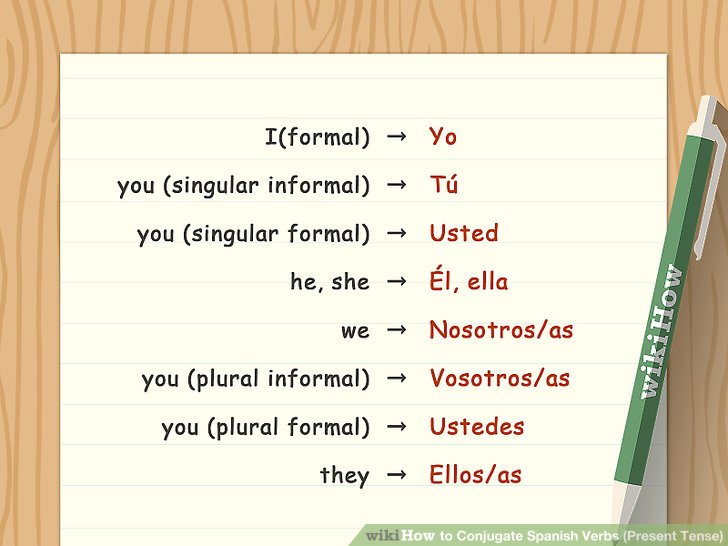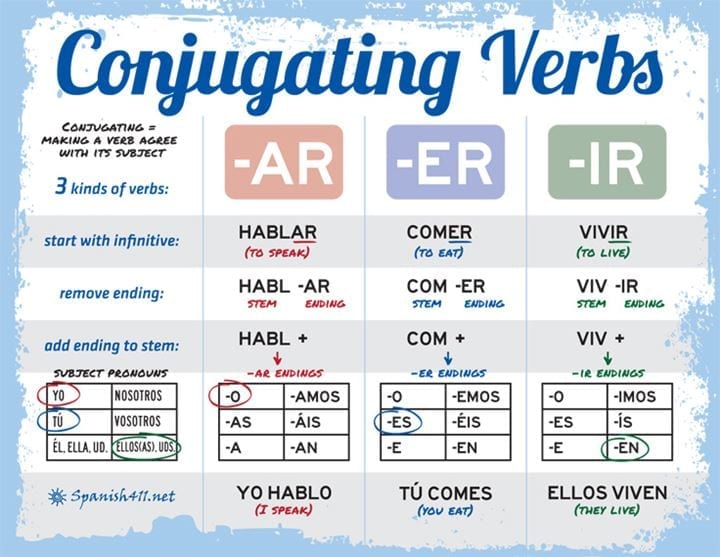temer means: to be afraid, to fear
In this lesson we will see how to conjugate the verb temer in the Presente tense of the Indicativo mood. It means we will see step by step how to get the following conjugation:
| yo | temo | I am afraid |
| tú | temes | you are afraid |
| él/ella/usted | teme | he/she/it is afraid |
| nosotros/nosotras | tememos | we are afraid |
| vosotros/vosotras | teméis | you are afraid |
| ellos/ellas/ustedes | temen | they are afraid |
This lesson is specifically about the temer conjugation. For an overview of Simple Tenses conjugation check the Simple Tenses Conjugation Chart.
You may also see the Video Presentation on how to conjugate verbs in Presente. It’s embedded on the right, but using the above link you can get more detailed information on conjugation in this tense and explanation of special cases and exceptions.
How to translate Presente to English
Notice that the phrases in English in the third column of the above conjugation chart are not direct translations from Spanish to English. They are usually the closest general equivalents. The example differences are:- In Spanish, there is the form usted in the third person singular. But this person does not translate to the English third person singular. It translates to the so called formal you and uses the inflected form which is most often represented as he/she/it in English conjugation charts.
- Similar situation happens in the third person plural, where ustedes translates to the English plural formal you but uses the form which corresponds to the they form in English.
- Tenses are used differently in Spanish and English, so the actual translation should always take into account the context and focus on translating the meaning, not just words.
- In both languages each verb may have multiple meanings and not every meaning translates directly to the other language. Here also, the context and focusing on the particular meaning helps to create the most accurate translation.
The Spanish Presente de Indicativo tense translates to one of the following:
- The English Present tense, for example: yo temoI am afraid
- The English Present Progressive (or Present Continuous) tense, for instance:ahora vosotros teméis(plural) you are being afraid now
Notice however, that the Spanish equivalent of the Present Progressive also exists and is in common use – that’s Presente Progresivo (or Presente Continuo).
Note the timeline
The ability to correctly locate the desired position on the timeline is a crucial skill for proper use of tenses. So pay attention to the timeline in our lessons and visualize it while speaking, listening, writing and reading. After some practice you’ll be capable of selecting the right tense to use much easier.
Step by step instructions
| Presente belongs to the simple tenses group, which means that all of the inflected forms are one word long. There are also compound (compuesto) tenses in Spanish language, where each inflected verb form consists of two words. The verb temer has an entirely regular conjugation in the Presente tense of the Indicativo mood. It means that this verb follows the basic rules for its group (-er) without any exceptions. |
| The basis for this conjugation is the stem of the verb, so we begin by splitting the infinitive into a stem and an ending. It’s very easy to do. Just remove two letters from the end of the infinitive form and you have the ending — one of -ar, -er or -ir. What’s left is the stem. So for temer:
|
| Use the stem tem- in each subject as the basis for the conjugation, the common prefix or root that each of the forms begins with. |
 | Next, add to this regular stem the endings specific to each person. See the image on the side showing all the six endings. Notice the colors and shapes of the letters. It should help you find patterns and make it easier to remember these endings. Each grammatical person has a specific ending in each of the three conjugation groups -ar, -er, -ir. |
Add the regular ending -o for the first person singular to create temo:
|
And as before add the regular ending -es for the second person singular to create temes:
|
And again add the regular ending -e for the third person singular to create teme:
|
And once more add the regular ending -emos for the first person plural to create tememos:
|
And one more time add the regular ending -éis for the second person plural to create teméis:
|
Similarly add the regular ending -en for the third person plural to create temen:
|
That’s it! The conjugation is now finished. But don’t end your session yet – it is very important to repeat and practice the material in order to remember it. Check below for example phrases and suggestions.
Example sentences
A quien teme preguntar, le avergüenza aprender.
He who is afraid of asking is ashamed of learning.
Next Steps
- To practice this conjugation and test yourself try this Conjugation Exercise or the Memory Game
- For exercises and examples related to temer visit our Exercise section
- To see conjugation charts in all tenses for temer visit the Conjugator
- To explore other learning materials visit the Study section






